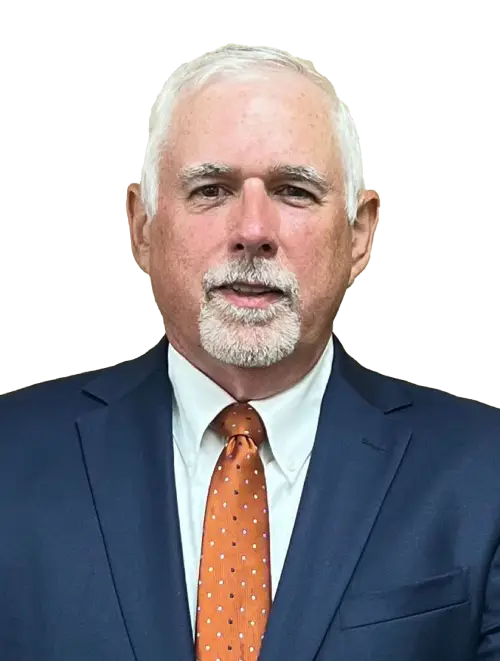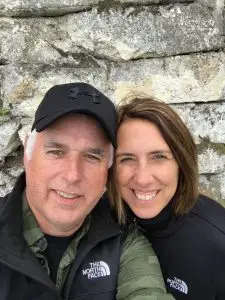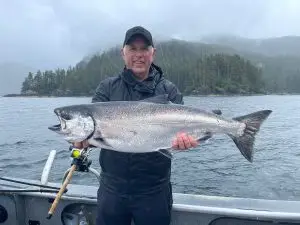Our Leadership

Get to know…
Mike Sargent
Mike Sargent, Walsworth’s Vice President of Technology, has been a key part of the company’s technology infrastructure team for nearly 40 years. For the native of Meadville, Missouri, carving out a successful career with a company so close to his home has been “incredibly fulfilling.”
Let’s just start with the basics. What year did you start with Walsworth? And what are the different roles that you’ve had with the company?
I was hired in 1986 to work as a developer on Comtran, a word processing program. The name means computer transmitted. I was hired to work on Apple IIe equipment.
This is when desktop publishing was at the very beginning. I became interested when we created newsletters on Macintosh 128K that had two disc drives in it – one for the system and one for the application (PageMaker). This was my introduction to desktop publishing.
A yearbook adviser by the name of Jim Jordan wanted to produce a yearbook using PageMaker. He and I talked and decided there’s nothing stopping us from producing and printing the book. Jim created a paste-up book since there was no high quality printers at that time. He would print pages on an Apple laser printer and paste them onto layout boards. He sent the photos with the boards and we (Walsworth) figured out how to integrate them into our production processes.
Walsworth published a guide, written by Jim Jordan, that explained how to create a yearbook using desktop publishing from a school’s perspective. I then created a corresponding guide on how to do it from our perspective.
And you still have those?
Yes. The guide was titled “Desktop” with the mouse on it (mice were a new concept back then!). The guide explained what was needed from a hardware and software standpoint and the different options available for submitting your yearbook using PageMaker.

Were we the first yearbook company to do something like this or were others also doing it?
We were the first one to embrace it. And I think we were the first one that ever printed a book that way. That was 1986 and it delivered in the spring of 1987. Over the next few years, desktop submitted books grew to over 95% of our books.
We wrote the very first plug-ins in the yearbook industry in 1992 when version 4.2 of PageMaker was released. While our plug-ins have underwent a lot of changes over the years, the basic concepts of what we created 30 years ago is still being used today.
What has it been like for you watching the evolution of yearbook desktop technology over the years?
When I got here, we printed for approximately 2,000 schools. Most of our schools were using Apple 2 equipment to type their copy because we had copy fitting software. We did all the printing to paper and converted it to large format camera file.
I saw that transition over about a five-year period from the camera-based method to desktop publishing. Now schools could create their layouts digitally, we would scan the photos and send them back for proofing. We developed the “Z Proof” process, an industry first, that allowed Walsworth’s schools to edit and re-crop digital photos for the first time.
Digital cameras were initially of low quality and very expensive. By 1997 the next generation of cameras became available with the quality needed for our customers to begin submitting digital photos. We created software to help them with the quality and provided instructions to improve their photos using Adobe Photoshop.
The desktop publishing process continued to evolve step by step. Digital cameras improved to allow quality color photography. The next step was the evolution of PDF creation which allowed schools to fully control the content of their page. And finally today, we supply online software that provides all the functionality needed for a school to create their yearbook using a browser and a digital camera.
How did your role specifically evolve?
I eventually turned over the customer facing portion of my job to a newly formed development group and concentrated on internal software and processes.
Over the next years, we converted from printing individual page files, to flats (eight pages), to printing directly on metal plates and finally directly to a digital press.
In 2006, I was one of four technology leaders to lead a portion of an initiative which reviewed all aspects of technology at Walsworth, including department organization, applications, development and infrastructure. I was eventually appointed to lead the initiative and oversaw the implementation of the changes. I was charged with creating a new Technology Department that encompassed the entire organization, both internally and customer facing.
Take a typical day or a typical week for you. How would you describe your duties now compared to what they were 10 years ago or 15 years ago?
Today, guiding our technology strategies to make sure they’re supporting the goals of the business is my number one responsibility. If technology is not in alignment with business or vice versa, we have problems. Our long-term success depends on aligning our technology projects and goals and our business projects and goals. It is only by working together as a team that we can sustain long term success.
I’ve spent my entire career creating processes and software to improve the competitive position of Walsworth at both tactical and strategic levels. The scope of my responsibility has changed but the goals have remained the same.
What about cyber security? Is that now a part of your strategic role and your day-to-day work?
Ten years ago, cyber security was more about virus protection and not about hackers. We were able to get ahead of the curve from a cybersecurity standpoint with dedicated staff as early as 2017. We continued to grow our expertise and brought in experts to ensure our security posture was appropriate for our industry.
In just a year and a half later, we were hit with a ransomware attack that we successfully stopped. We paid no ransom. We were able to stop the attack within minutes and limited the damage. We lost no files. We put in thousands of hours of work prepping for something we hoped would never happen and then it happened. The work paid off.
What is it specifically about Walsworth that you think has led you to stay with the company for as many years as you have?
It’s a combination of things. I grew up locally and in a way, I am living my dream in my hometown. There are very few people who have the opportunity to do so. Growing up in a small town (400 people) and graduating college with a computer science degree in 1985, my assumption was I was going to end up in the city (Kansas City, Columbia or St. Louis).
I was hired at Churchill Truck Lines as a developer. Eighteen months into the job, I had the opportunity to come to Walsworth, who had convinced me this was the right move for me and my family.
It was a great move. It’s been a great company to work for. The diversity of my job is amazing. I was given the chance to learn the infrastructure side, to work with enterprise applications, data management and with software development. I also dealt with customers to understand their needs. With all this diversity, life at Walsworth has been very fulfilling.
When you’re not at work, what do you love to do?
I have a wife and a family of three girls. They are all married to great son-in-law’s and have added seven grandchildren to the family. I spend a lot of time with my friends and my church.

You have hobbies?
I love to hunt, fish and play golf.
I also have a major woodworking hobby. My dad was a carpenter and I grew up building houses as a summer job, and later on nights and weekends for family and friends.
One of the fun things we ask everybody is what’s the best book you’ve read?
One that applies to work is called The Goal, a book about scheduling that has project management applications. It talks about bottlenecks and restraints. The great example that sticks in my mind is about a boy scout troop all walking at different speeds. This creates bottlenecks and lots of friction between the boys! The book explains how to remove the bottlenecks and smooth out the experience. It was a great lesson that can be applied to workflows, processes and software projects.
What’s the most memorable customer interaction you’ve had?
I spent nine days on the USS Constellation teaching them Photoshop and InDesign. We left port from Hong Kong, went south of the equator and ended up at the naval base in Yokosuka, Japan. I am no longer a pollywog.
Can you tell us a little about the mission trips you’ve taken?
I’ve been going to Nicaragua for almost 10 years. We build houses for people that don’t have shelter. This was a perfect fit for my background of building houses. When we go to Nicaragua, it’s not just about building houses to supply a material need, we also provide an answer for their spiritual needs. In the areas we are assigned, there is little or no church access. We’re trying to supply them spiritually and it’s just a great situation. There are wonderful people in Nicaragua.
Have there ever been specific experiences on any of those trips were particularly memorable?
Every trip when we visit a village there will be a line of 100 to 200 people welcoming us there. They’ll have balloons and all kinds of stuff. Every day when you go into the village, you get that reception and it just sticks with you.

What’s more satisfying, the feeling when you’re building a house or solving a software problem?
You know, it’s really one of the same thing. Building a house is a process. But like any process, there are things that happen that you did not expect. I think that I learned a lot of my problem-solving skills by working with my dad and my uncle. They would get presented with these problems and they would include me in determining a solution. That skill has served me well as our team has dealt with challenges, unexpected problems and equipment failures.
Where did you grow up?
Meadville, Missouri; 24 miles east of Marceline
What’s one thing about you that most people might not know?
I play cards (six-point pitch) every morning at 5:00 for about an hour before I come to work. We play six days a week. We don’t play on Sundays and we don’t play on Christmas Day, but we play every other day. There’s seven or eight of us. We’re all friends. It’s been going on in Meadville for over 100 years. We are doing our part to keep the tradition going.
What’s another fun fact we can share?
Well, I was the Missouri State Skeet champion in 1980. We had a team in school (Meadville High School), freshman through senior year. I was in the top three for both skeet and trap. There were people on the team better than I was, but not that day. Our team had the individual champion all four of those years.
What is your favorite memory from your career here at Walsworth?
I’ve had an absolute ton of them, but the one that stuck out was sitting outside of a convention center up in Chicago. It was 20 degrees, but we felt like we had to go outside to get a little privacy. We were making the decision to change our entire printing system away from a trusted vendor and move to another one with more advanced technology. This was a huge decision that we made together and together we made it work.
Any final thoughts you would like to express that we haven’t covered?
Walsworth has provided a great career for me. It’s an incredibly fulfilling place; there are great people all over the place. It’s a great company. I can’t imagine my life without Walsworth.

